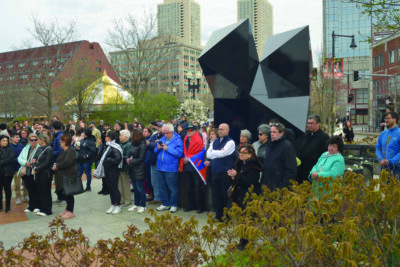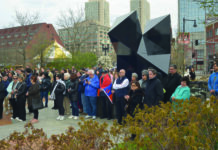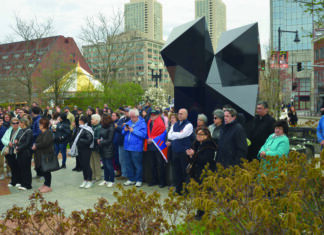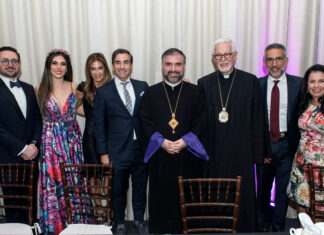By Hagop Vartivarian
He was one of the dominant figures in Beirut’s Hay Yeridasartats Engeragtsutiun [HYE, or in English, Armenian Youth Association]. I knew him while I was still an adolescent, inside the worn rooms of the Zareh Noubar club of Beirut, where he was a permanent fixture. During that era of the 1960s, he had focused his Armenian national service within the sphere of HYE’s “Asbedneru Hamakhmpum [Assembly of the Knights].” This organization was born at the end of January 1957. It was for that generation of youth and those reaching middle age who wished to continue to support the 30-year-old HYE. The Assembly gathered together a knowledgeable and dynamic element which had passed through the ranks of HYE and had attained success career-wise.
At the beginning of the 1950s, Noubar Nazarian came to New York as the representative of his family’s commercial firm, and became acquainted with the Knights of Vartan, which was founded at the beginning of the 20th century. Upon his return to Beirut, he wanted to create a movement with the same spirit in Lebanon. He assembled a group of idealistic Armenians and became their leader. He also invited his brother-in-law, Puzant Markarian, and the latter’s wife, Mari, who in those days was the chairwoman of the HYE Women’s Committee, to participate.
The dream of these idealistic Armenians in this association was to have their own center, a place for games where the association’s adolescent, athletic, cultural and scout movements could convene under one roof. Puzant Markarian’s contribution to this newly created association was immense. The members primarily organized social events in order to work towards the goal of a center for HYE. The initial idea of building a center on land in the Beirut neighborhood of Sin el-Fil failed. Instead, the Armenian General Benevolent Union’s Levon G. Nazarian School came to stand on that spot. However, later the Alex Manoogian Cultural Center was created on land in central Beirut thanks to the generosity of AGBU’s president, Alex Manoogian, and the fund established by the Asbeds. Thus, in 1973, the dream of those years was finally realized, and we HYE members moved from the humble rooms of the Zareh Noubar club to our new center, with its venerable newly-built, seven-story building, open air and enclosed fields and its separate garage.
My acquaintance with the Markarians dates back further than this, however. My uncle’s wife, Lousin, while still a student at the nursing school of the American University of Beirut, was friends with Mari, and his mother-in-law, Satenig Nazarian. Lousin welcomed the arrival of Puzant and Mari’s first son, Alex, to this world, and thereafter they remained friends. They were also connected to my father. My father would often visit the Nazarian brothers, especially Garbis. Puzant, the sole son-in-law of the noted Nazarian family, had his special place in the company. In the future, he would establish, as owner and director, his own business in the port, at which primarily Armenian workers and officials would work.
I met Puzant Markarian for the first time in the summer of 1956, when the HYE had organized its bazaar in the public gardens of Beirut. The president of the Republic of Lebanon, Camille Chamoun, was present. Puzant was a handsome, charming presence who had become a measuring stick in those days for a presentable and successful Armenian. He came to our table to say hello to my father, uncle and Lousin.









